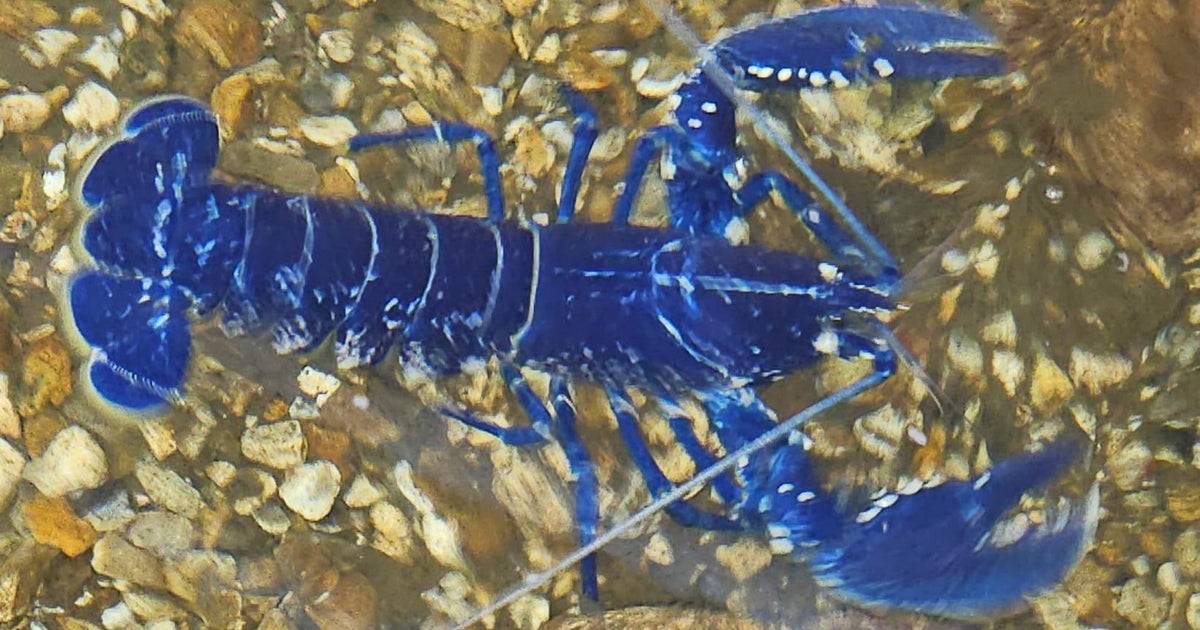Endangered whale last seen 3 decades ago found alive, but discovery ends in "heartbreak"
A humpback whale beached along the shores of a remote island in the Northern Atlantic died earlier this month after having disappeared for about three decades.
The enormous creature was still alive when it washed ashore on Sable Island National Park Reserve, a strip of sand bar covering just 12 square miles of land in the Atlantic Ocean, about 110 miles southeast of the easternmost tip of mainland Nova Scotia in Canada. The incident was reported on Nov. 2, according to the Marine Animal Response Society, a charity organization based in Nova Scotia that focuses on marine animal conservation.
"Given the size of the humpback and its location on the south side in dangerous surf conditions, there wasn't much that could be done to help this whale," the Marine Animal Response Society wrote in a Facebook post shared on Monday, which included several images of the whale.
The U.S. National Park Service says adult male humpbacks like the one on Sable Island can grow to measure between 45 feet and 56 feet in length. Generally, the animals weigh at least 35 tons, or 70,000 pounds.
"Some live animal incidents are really difficult to deal with due to safety concerns, location, logistics and the size of the animal. When all these things collide, response can be nearly impossible, much to the heartbreak of all involved," the charity organization said, adding that veterinary partners from the Canadian Wildlife Health Cooperative and the Atlantic Veterinary College could not get to the remote beach to help or to "humanely euthanize" the animal, because the area is so isolated.
Sable Island is managed by the Canadian government agency Parks Canada, which, like the U.S. National Park Service, is in charge of the country's national parks, conservation areas, historic sites and other protected pieces of land. Visiting the island known for its wild horses and colonies of sea lions is possible during certain months of the year, although visitors must receive permission from Parks Canada.
According to the agency's website, Sable Island is accessible by air or sea, and prospective visitors can book a seat or charter a trip with a Parks Canada licensed operator, or plan a trip on a private vessel in January and February and from June to October. The site notes that "delays and cancellations are common due to weather."
The beached humpback whale died several days after washing shore, but officials with Parks Canada were able to take a photograph of the underside of the whale's tale while it was still alive, which allowed researchers to match the beached animal to a humpback originally seen decades earlier. Humpbacks can be identified through distinctive markings on the undersides of their tail, which are called flukes, according to the U.S. National Park Service.
Researchers at Massachusetts' Center for Coastal Studies and Maine's Allied Whale at the College of the Atlantic examined the photograph of the humpback's tail and confirmed the whale had been spotted first in 1982 on Silver Bank, off the Dominican Republic, meaning it was at least 43 years old. The whale was last seen in the early 1990s, and how and where it spent its life over next several the decades remains a mystery.
"We can only imagine what he has been doing in that time," the Center for Coastal Studies wrote in another social media post about the humpback. The whale's cause of death is also unknown, according to the marine animal response society, since circumstances on Sable Island prevented officials from performing a necropsy. But there were no external signs of injury or trauma to the whale based on observations.
"Large whale strandings are challenging and dangerous, and it is not always possible to identify the individual or determine why it died," the Center for Coastal Studies said. "While they were not able to determine the cause of this stranding, they were able to collect and share images that are critical to long-term population studies in the North Atlantic."



